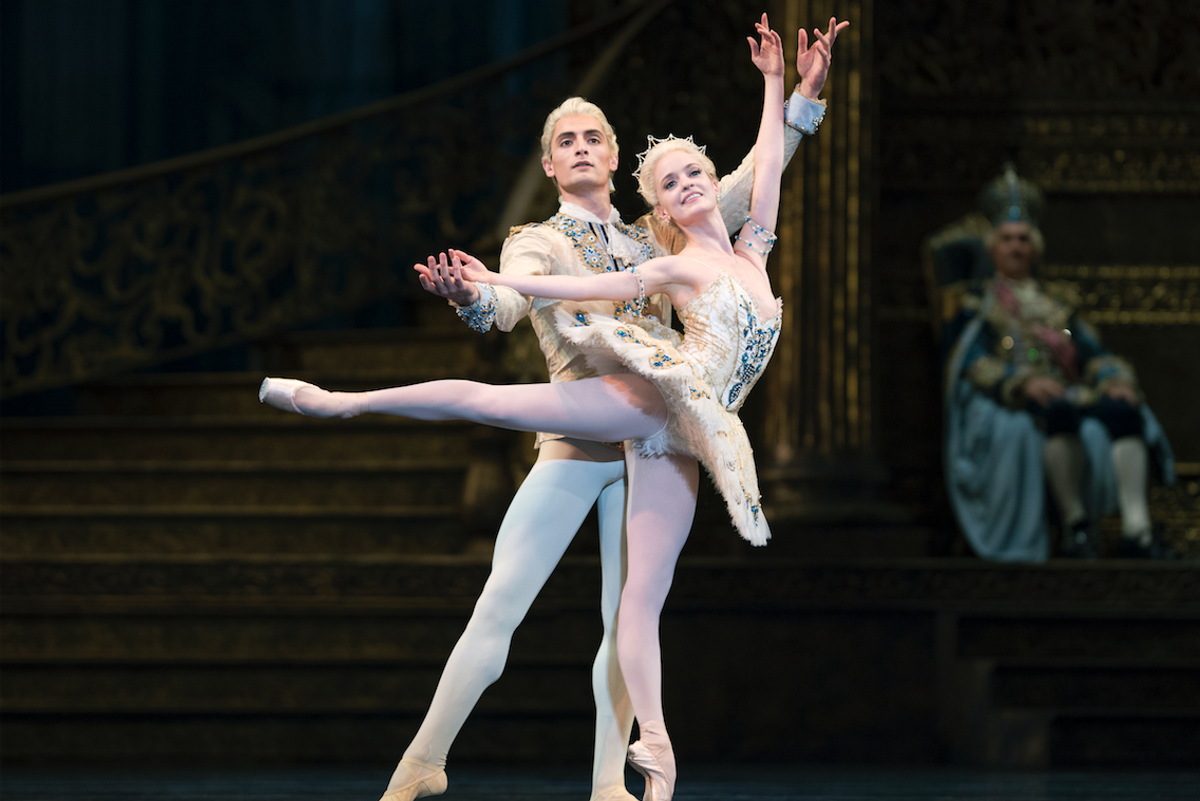San Francisco Ballet Principal Sasha De Sola on Becoming Aurora
The first time I saw Sleeping Beauty was on video, the Kirov version with Larissa Lezhnina. The music for the first entrance gave me butterflies. Aurora comes out, and it captured my heart. Larissa coached me for my first season of Aurora, and just the fact that we were sharing the same studio—I couldn’t get over it. One of the things she encouraged me to explore is after Aurora faints: You get back up, you look up at your parents and re-center yourself. For me, what feels natural is that you don’t want anyone to worry. Maybe there is a moment where you get a little embarrassed. It’s those small moments that make it feel very personal to me.
I always hear that Aurora is not a very dramatic role. I disagree—she has to go through a distinct transformation. To capture that 16-year-old essence, I think about when I was 16, which is when I started as an apprentice at SFB, and felt like a child acting like an adult. Aurora has moments of innocence and tenderness, but she finds her voice and her independence as a woman.
Doing my first Rose Adagio onstage, I was very, very nervous. I stepped up for the first attitude and I got super-scared, and I thought, You’ve done the work. You can do it. Then I trusted my body to do what I had to do. I ask my suitors to give me 10 minutes before the curtain goes up, and we try the attitude balances, the promenades and pirouettes. It’s all about where they offer their hand—if it’s in the wrong place, I just have to power through. But I try as much as possible to not have much weight on them at all, so that when I release the hand it’s not a huge change.
 Erik Tomasson, Courtesy SFB
Erik Tomasson, Courtesy SFB
What I’ve always loved about Sleeping Beauty is how closely the music is linked with the choreography. In Aurora’s first-act variation, she goes through a series of hops on pointe, and at the end of the Rose Adagio there’s an arpeggio when she does a series of bourrées to fifth position. That’s her youth and exuberance, and then she reins it back in before the diagonal of pirouettes. In the second act there needs to be this ethereal, romantic quality in order to show her maturity, so the wedding will make sense. Creating that arc has been the biggest challenge.
I don’t like to watch the Prologue—if I’m already drawn into the story, my entrance doesn’t feel fresh. I stay in my own world up until the first act begins, and I visualize my birthday party. It’s all about tricking yourself.
Regardless of what I’m dancing, I always take a clean, proper ballet class in the morning. I never skip that, ever. And every single class I practice my attitude balance.
TIP: “Eye contact is very empowering. In the Rose Adagio, eye contact helps me be present with my suitors, versus concentrated on what I have to do. Your energy gets into sync.”





